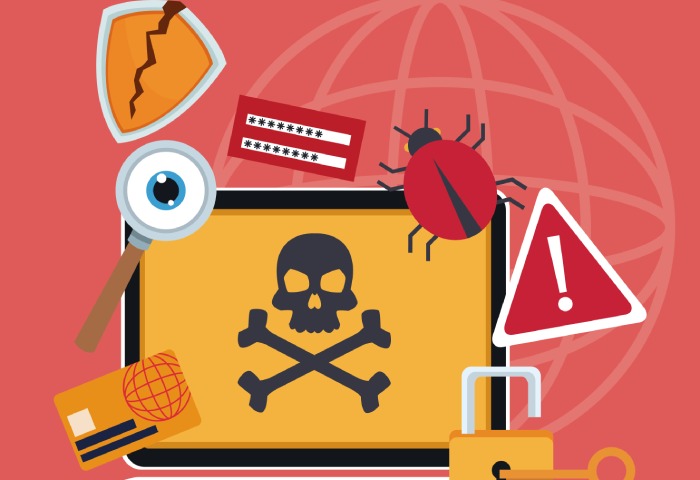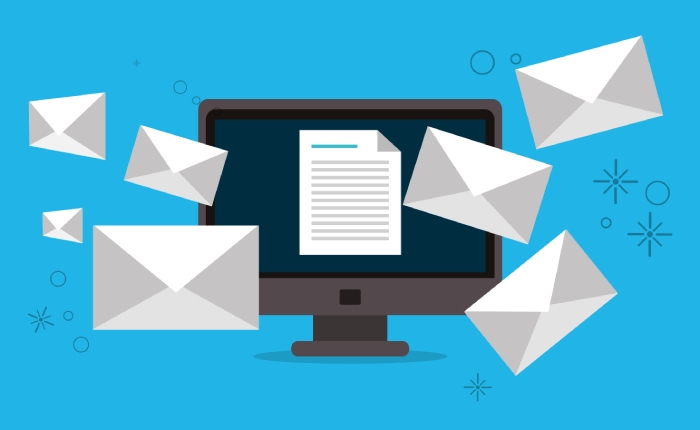Why is email security important in 2025?
As a business owner, you probably send emails almost every day, whether they are marketing emails, order confirmations, important instructions, or even internal updates. These emails are essentially an extension of your brand’s identity, and we’re sure that the last thing you want is to taint it or for someone to mess with it.
You might not even foresee it, but if a cybercriminal happens to misuse your domain, the damage can be irreversible. They can send fake emails that look exactly like yours—same sender name, same branding, same tone. These emails could trick your customers into sharing sensitive information, making payments to the wrong account, or clicking malicious links.
To your customers, it still looks like you. But behind the scenes, it’s someone else impersonating your brand. What would then follow is a series of negative reviews, complaints, and even financial loss.
So, how do you avoid this mess? The only way you can really protect your emails from being intercepted or impersonated is by setting up proper email authentication protocols.
Let’s see what a good email security strategy looks like and how it can help you protect your brand and your customers.
What are the risks of an unsecured email setup?
If your domain isn’t protected with the right protocols, you are practically inviting the bad guys to impersonate your brand and exploit your customers’ trust. There are a lot of things that can go wrong if an attacker happens to target your domain, and most of them spiral out quickly.
Fake emails can be sent from your domain
If you do not secure your domain with authentication protocols, attackers can easily spoof your domain or use it to send phishing emails. The fraudulent emails often include malicious links, fake invoices, or even corrupted downloadable files. What’s worse is that these emails are usually so well-crafted that an unsuspecting user might not be able to spot any warning signs and might just go on to engage with the email.
Your customers can be duped
Cybercriminals target your brand through your customers. By sending out fake emails on your behalf, they deceive the recipients into thinking the message is genuine. However, in reality, it includes a nefarious URL that users click, unknowingly disclosing sensitive information, downloading malware, or initiating unauthorized payments. Since the email appears to come from your domain, the blame often falls on you, which can damage customer relationships and erode trust.
Your reputation will get damaged
Once your customers realize that they have been duped, there is no reason they would trust your brand again. This is because if they received a fake email that looked like it came from you, they’ll assume that you didn’t do enough to protect them and do not value their safety. This inevitably puts you in a bad light.
And even if they decide to give you another chance, the trust won’t be the same. It takes just one incident to undo years of credibility.
Your emails might end up in spam
If your emails are not authenticated properly, they might never reach their target audience.
Today, every major email service provider (ESP) requires you to conform to the latest security norms. But if you fail to do so, they simply prevent your emails from reaching their destination— the recipient’s inbox. In such a case, the ESP might just push it into the spam folder, or worse, block it altogether.
You might lose business
Between financial fraud, reputational damage, and disrupted communication, the cost of poor email security quickly adds up. Customers who’ve lost their trust in your company might switch to a competitor. And internally, your team may have to divert resources to damage control, investigations, and support. For most companies, particularly small and medium-sized ones, this would mean the difference between success and survival.
How can you safeguard your email ecosystem?
Looking at the risks, you might think that it’d take a lot to protect your emails, but the good news is, email security does not necessarily require a massive overhaul. In fact, if you follow a strategic approach with the right support, it will not feel like a daunting task. That being said, email security is no longer an option; it’s a necessity.
Here’s what you should do to build a secure email ecosystem:
Start with SPF
Your email authentication journey begins with SPF. It allows you to publish a list of authorized mail servers that are permitted to send emails on behalf of your domain. When an email is received, the recipient’s server checks if it came from an IP address listed in your SPF record. If not, it’s marked as suspicious. SPF helps prevent unauthorized senders from spoofing your domain, but on its own, it’s not enough.
Implement DKIM
The next layer is DKIM. This protocol works by attaching a digital signature to every outgoing email, which the receiving server can verify using a public key stored in your DNS records. When the receiving server receives the email, it checks for this signature and compares it with the public key published by your domain. If the signature matches, it confirms that the email hasn’t been tampered with in transit and that it truly came from an authorized source.
Use DMARC to bring it all together
DMARC builds on top of SPF and DKIM and gives you control over what happens when an email fails authentication checks. You can set a policy to either monitor such emails, send them to spam, or block them completely.
It also provides regular reports showing who is sending emails using your domain, whether it’s from your systems or someone attempting to misuse it. Without DMARC, there’s no way to enforce your email security setup, and you won’t know if someone is impersonating your brand.
Analyze the DMARC reports
Once you have configured DMARC, make sure to thoroughly analyze the reports it sends you. These reports show which IPs are sending emails on your behalf, whether those emails passed or failed SPF and DKIM checks, and how receiving servers are handling them. Over time, these insights help you identify unauthorized senders, misconfigured systems, or even legitimate services that aren’t properly authenticated.
Not sure how to get started with your email security journey? Our team at DuoCircle is here to help! Get in touch with us to know how!




